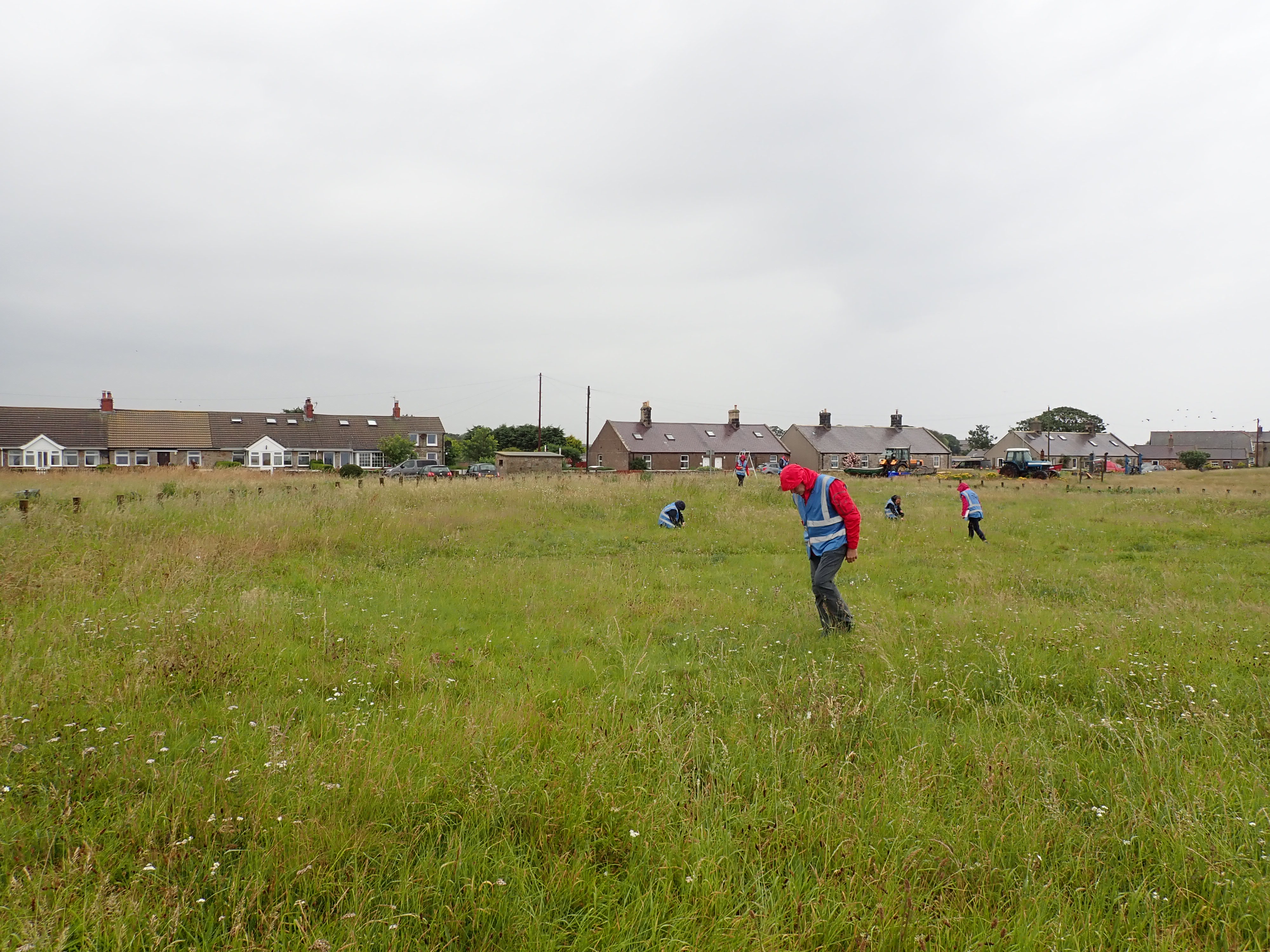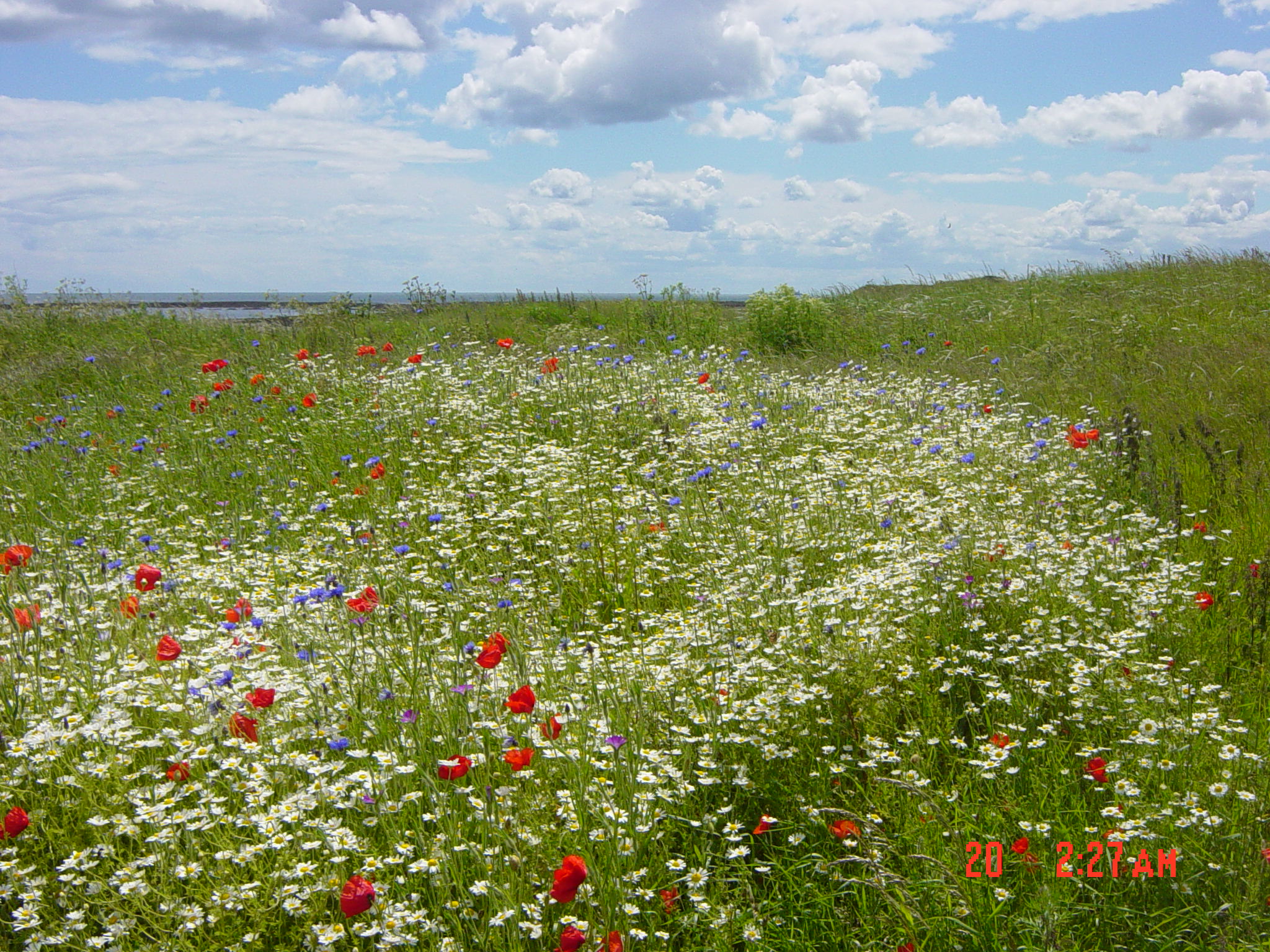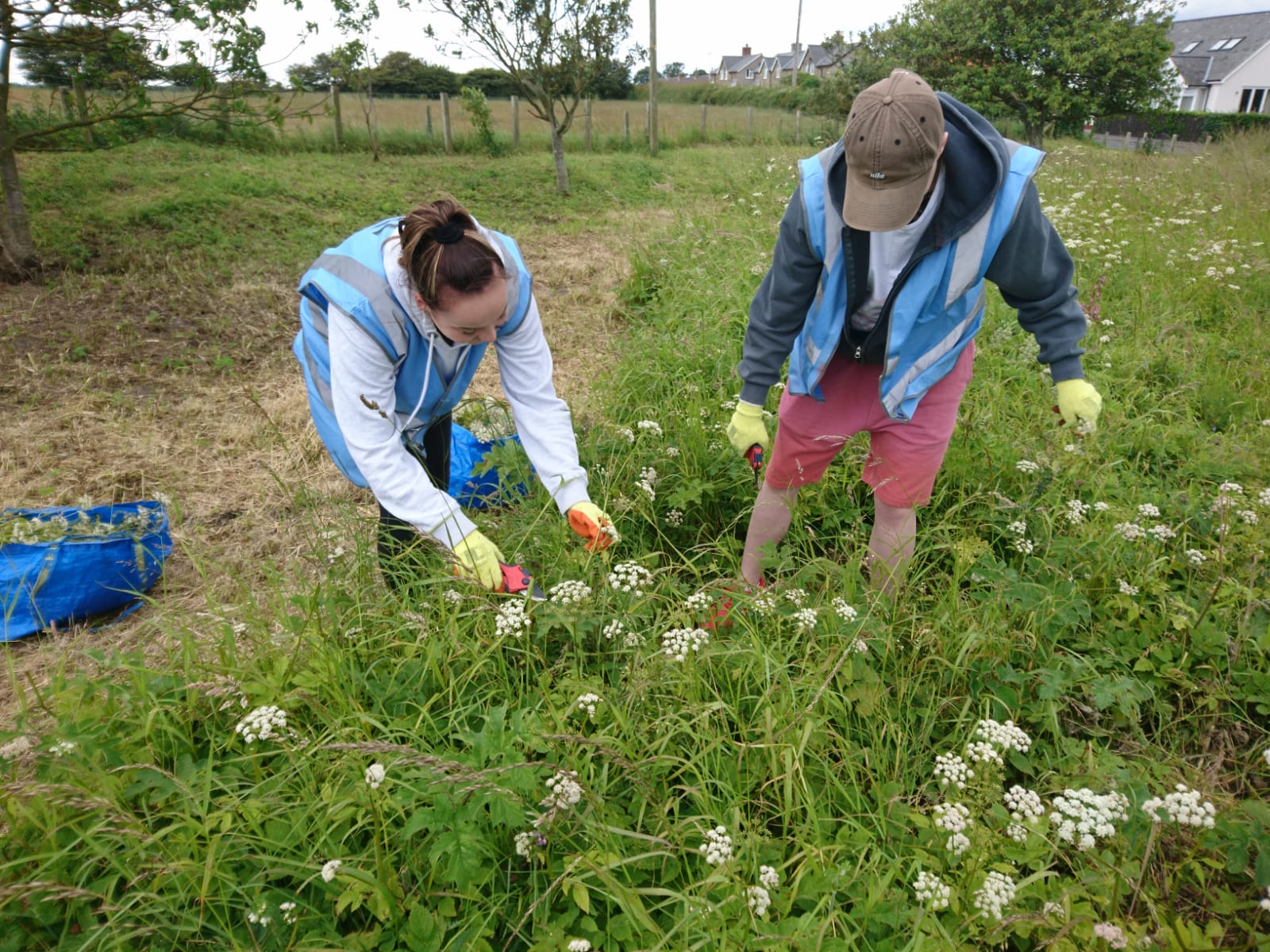
Over the last couple of years Coast Care has been helping Longhoughton Parish Council to create a wildflower meadow. The meadow is now well on its way, so the Parish Council no longer need our help to maintain it. Before we said goodbye though, we carried out a survey to see what everyone’s hard work has achieved.

Coast Care volunteers carrying out a very soggy plant survey
Species rich meadows have declined drastically in the last 100 years, and now cover less than 1% of land in the UK because of changes in land use and agricultural practices. This decline has spelled disaster for our pollinating insects. Pollinators are extremely important to our way of life, with 84% of our crops relying on them. Half of our bumblebee species are in decline, three have already become extinct and seven have declined by more than 50% in the last 25 years. Two thirds of our moths and 71% of our butterflies are also seeing a long term decline, all of which has a knock-on effect higher up in the food chain.
When we talk about restoration of species rich grasslands, you might first think of large, open fields. But by creating smaller wildflower areas like the one at Boulmer, or even in your garden, we can create a mosaic of habitats that our pollinating insects can easily move between. Creating a wildflower meadow is not an instant process though and can take years to become well established, but that doesn’t mean you won’t see anything in your first few years. The Parish Council will continue to manage the meadow at Boulmer so that it provides a space for pollinators and people for years to come, but our survey showed that the hard work is already paying off!

Beautiful and biodiverse!
Yellow Rattle and Eyebright are key species when establishing a meadow, so it was great to see so much of it at Boulmer. They are semi-parasitic, attaching themselves to the roots of host plants to steal their nutrients. They mainly target grasses, which is really useful. It weakens the grass swards, giving other species a chance to thrive and increasing the biodiversity of the fledgling meadow. The Parish Council have been sowing Yellow Rattle seed for the past two years, and it’s definitely doing its job. They’ve also spent many hours removing less useful species like Hogweed to help create space for other wildflowers.

Coast Care volunteers working on the wildflower meadow
For summer-flowering meadows, Common Knapweed, Ox-eye Daisy, Bird’s-foot Trefoil, Yarrow, Lady’s Bedstraw and Meadow Buttercup are great species to have. They are excellent sources of nectar and pollen, but take a few years to flower since they establish their root systems first. It was fantastic to see these plants increasing in numbers. It was raining when we did the survey, but on a sunny day there are plenty of bees and butterflies being drawn in by the plentiful food supply. Meadow Buttercups, like all buttercup species, trap a layer of air just beneath the surface of their petals. This reflects light like a mirror, attracting insects from a surprising distance away. Knapweeds are great for attracting Common Blues, Marbled Whites and Meadow Brown butterflies. Once pollinated it also attracts birds like Goldfinches, which feed on its seeds. Ox-eye Daisies and Yarrow are great source of food for beetles, hoverflies and caterpillars. Bird’s-foot Trefoil is particularly good for bees because of its long flowering season and protein-rich pollen. They are vital for young bees, and are also food for the larvae of Common Blue, Green Hairstreak and Dingy Skipper butterflies.
We also found Tufted Vetch and both White and Red Clover. These are all legumes, so they gather nitrogen from the air and fix it into the soil, providing natural fertilisation for plants. They are also very popular with bees because of their highly nutritious pollen.
Our survey was well worthwhile, despite the horrible weather. It showed that the Boulmer meadow is well on track to becoming a much-needed area for our many pollinating species to feed. Adrian Hinchcliffe of Longhoughton Parish Council said ‘We are very grateful to Coast Care volunteers for their involvement. The project would not have got to where it is without their help’. So well done to everybody who got involved!
Find out more about Boulmer Wildflower Meadow at https://northumberlandparishes.uk/sites/default/files/parish-councils/documents/2018/November/BOULMER%20MEADOW%20Publication%20-%20November%202018.pdf.
